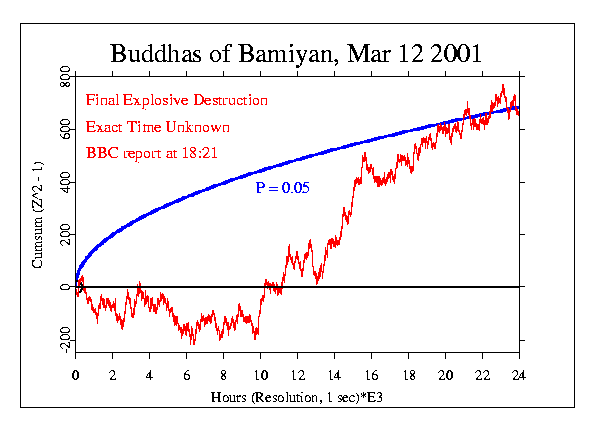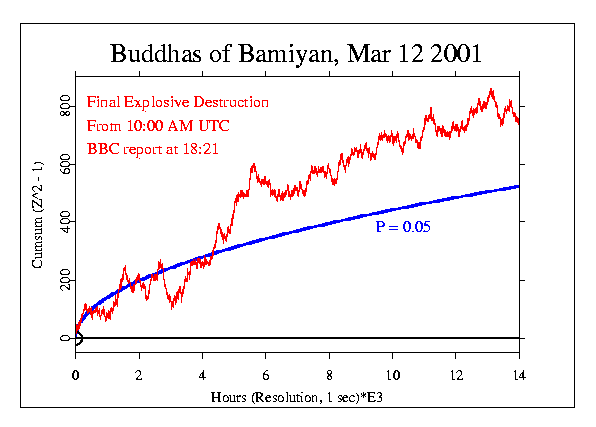|
The Buddhas of Bamiyan stood for 1500 years, perhaps longer, watching
over a beautiful valley of people who revered them not as religious
icons but a cultural treasure. Over the many centuries, the giant
buddhas, one over 50 meters tall, were hosts to pilgrims and tourists,
and merchants traveling the Silk Road, and they welcomed all.
In 1996, the government of Afghanistan was usurped by religious
fanatics called the Taleban, and they were not so tolerant as the
Buddha commended us to be. They believed that all artworks depicting
humans or animals were antithetical to their strange sect of Islam, and
they began destroying all such works. They worked away at the three
Buddhas, firing cannons and mortars, and because these enomous carvings
in the living stone of the Bamiyan cliffs were resistant, they brought
in experts at demolition. They drilled holes and placed dynamite, and
finally, sometime on March 12, 2001, the explosions utterly
destroyed the Buddhas. The following picture is of the Global
Consciousness Project's 38 eggs' reaction on March 12. I do not know
the actual time of the explosion, though I am seeking that information.
This graph shows the usual random walk along the horizontal until late
morning, UTC. It then exhibits a statistically unlikely trend, which in
a formal analysis might be taken as evidence of an effect.

The statistical analysis for the full day figure has Chi-square 87051 on
86400 df, and p = 0.059.
In the next figure, I have arbitrarily chosen to begin the graph at
10:00 UTC (which was probably about noon in Afghanistan; I think they
have a half-hour offset). In this case, the strong trend has a slope
equivalent to a probability of 0.00995, based on a Chi-square of 51142
on 50400 degrees of freedom.

|